ioXtreme PCI Express SSDs Anticipate SATA 6 Gb/s Performance
Benchmark Results: Access Time And I/O Performance
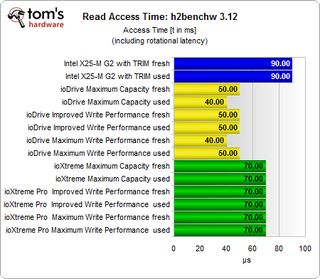
Although you probably wouldn’t buy this sort of flash SSD product for its access time, we can confirm that it’s fast. A 70 microsecond average is hard to beat.
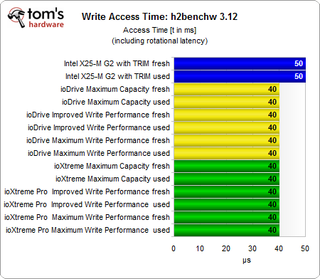
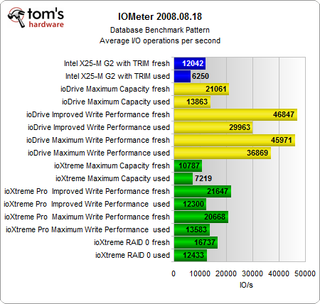
I/O performance is one of the most important factors when purchasing an SSD. Obviously, the SLC-based ioDrive remains by far the fastest solution, but the new ioXtreme still beats Intel’s latest X25-M G2 with the TRIM feature enabled. The Improved Write Performance setting offers the highest peak I/O performance, while the Maximum Write Performance run secures a higher minimum performance level.
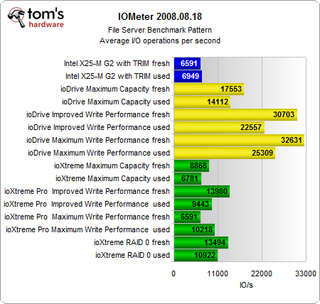
The same results apply to the file server I/O performance test. You need the Maximum Write Performance setting to ensure maximum performance at the lower end of the spectrum.
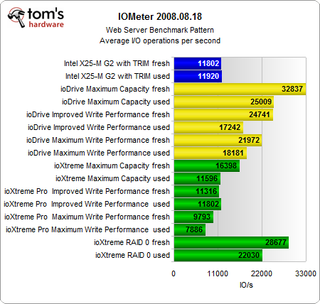
Web servers do not require lots of write operations, which is why the maximum capacity mode delivers the best performance. In this scenario, it also makes a lot of sense to arrange two ioXtreme drives in RAID 0 mode. As you can see, the effect is significant.
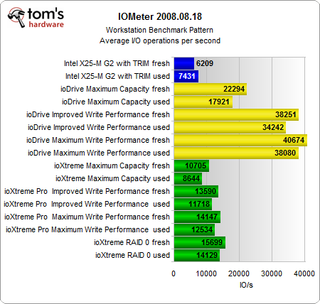
Workstation I/O performance still is up to 100% faster than an Intel X25-M G2, but if you want serious I/O horsepower, you have no option—you need an ioDrive with SLC flash memory.
Stay On the Cutting Edge: Get the Tom's Hardware Newsletter
Get Tom's Hardware's best news and in-depth reviews, straight to your inbox.
Current page: Benchmark Results: Access Time And I/O Performance
Prev Page Benchmark Results: PCMark Vantage Next Page Benchmark Results: ThroughputMost Popular

